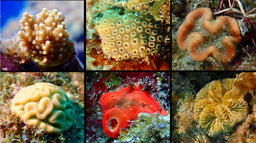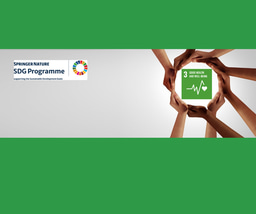Full-length MSP1 as a malaria vaccine: is there hope?
Successful immunisation studies in monkeys based on MSP1 involved the use of the full-length protein as a malaria vaccine. However, unsuccessful human trials only tested MSP1 subunits. We explore the potential of SumayaVac-1 to broadly stimulate immune mechanisms associated with protection.
Published in Microbiology
Unsuccessful clinical trials in humans have ruled out the once-promising malaria vaccine candidate antigen Plasmodium falciparum Merozoite Surface Protein 1 (MSP1). However, successful non-human primates immunization studies with parasites cultures-derived full-length MSP1 had rendered protection and clearance of blood infections from the monkeys. Difficulties at the time to recombinantly produce the whole full-length MSP1 protein as a vaccine construct, together with the high immunogenicity demonstrated against the C-terminal p42 fragment of MSP1 in immune-epidemiological studies, directed the interest of MSP1-based vaccines towards the design of subunit vaccines. The focus was quickly set on the GPI-anchored p19 subunit, the only remaining fragment of MSP1 attached to the merozoite surface at the onset of erythrocyte’s invasion and believed to play a crucial role in this important process.
Neutralizing antibodies inhibiting merozoite invasion have been considered key for immune protection. However, there is an increasing body of evidence suggesting a role of the innate immunity, via Fc-mediated effector mechanisms, in parasite clearance. These antibody functions have shown to highly correlate with protection in individuals from malaria endemic regions.
A previous publication by Blank & Fürle et al. demonstrated that SumayaVac-1, the first entire full-length MSP1-based malaria vaccine candidate expressed in E. coli, was safe, well-tolerated, and immunogenic in a first in human trial conducted in Heidelberg (Germany). SumayaVac-1 elicited high antibody titers in naïve volunteers that remained for more than six months after the last immunization over the level of semi-immune individuals from Africa.
In our recently published paper in npj Vaccines we describe that both, IgG and IgM antibodies elicited by SumayaVac-1 can activate, in a strain transcending manner, potent Fc-mediated effector mechanisms involved in the interaction with complement as well as with various immune cells, including monocytes, neutrophils, and NK cells, known to combat parasites. Notably, the N-terminal fragment p83, which contains highly conserved regions, emerged as a key target of functional immunoglobulins. Additionally, SumayaVac-1 elicited a recallable cellular cytotoxicity by IFN-γ producing CD8+ T cells, although at a low scale.
An ongoing clinical trial in Bagamoyo (Tanzania) will preliminarily evaluate the vaccine's proof of concept of efficacy through a control human malaria infection (CHMI). We will further determine if the quality feature of the SumayaVac-1 to elicit broadly functional antibodies at titers sufficient to stimulate several immune mechanisms can lead to a control in blood stage development of P. falciparum.

In the pursuit of malaria eradication, SumayaVac-1 may arise as a key contributor to other available tools to fight malaria by itself and/or by complementing other effective vaccines readily available, or soon in the market, targeting the liver stage, thereby extending protection against any potential parasite escaping the pre-erythrocytic immunological coverage.
Follow the Topic
Microbiology
Life Sciences > Biological Sciences > Microbiology
-
npj Vaccines

A multidisciplinary journal that is dedicated to publishing the finest and high-quality research and development on human and veterinary vaccines.
Related Collections
With Collections, you can get published faster and increase your visibility.
Lipid nanoparticle (LNP)-adjuvanted vaccines
This Collection invites research on LNP-adjuvanted vaccines, including mRNA, DNA, protein, and other vaccines, as well as innovative strategies in vaccine adjuvant development.
Publishing Model: Open Access
Deadline: Feb 19, 2026
Therapeutic HPV vaccines
Therapeutic Human papillomavirus (HPV) vaccines are considered to be a promising approach to intercept the development of HPV-driven cancers in already HPV-infected people. This collection aims to gather the state of the art of therapeutic HPV vaccine research – from novel vaccine design concepts, to preclinical models, to results of clinical trials.
Publishing Model: Open Access
Deadline: Dec 31, 2025






Please sign in or register for FREE
If you are a registered user on Research Communities by Springer Nature, please sign in